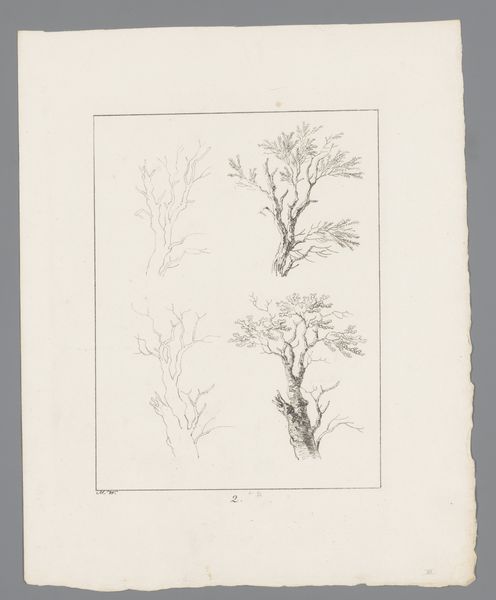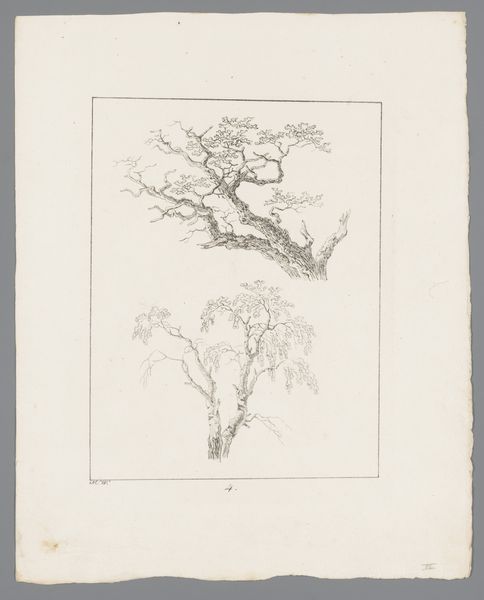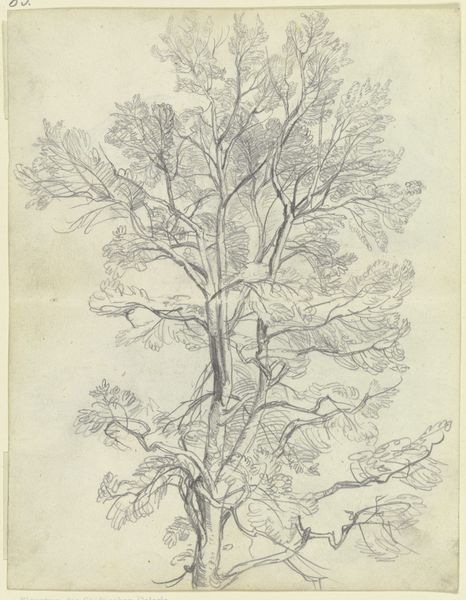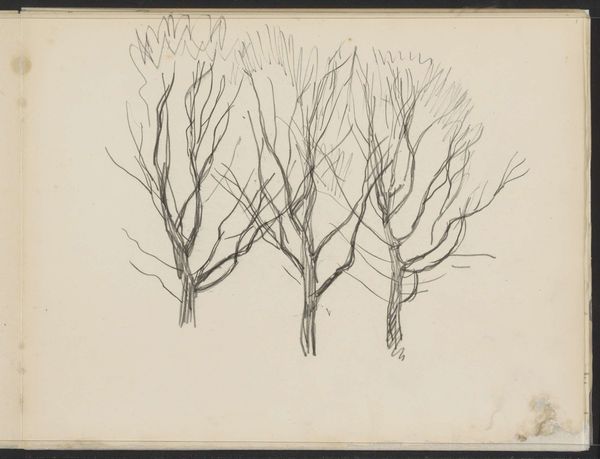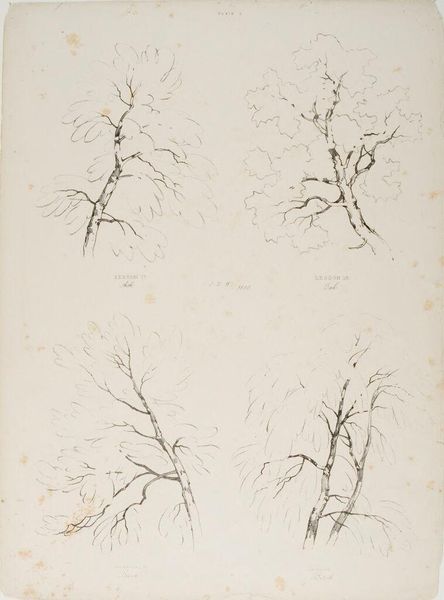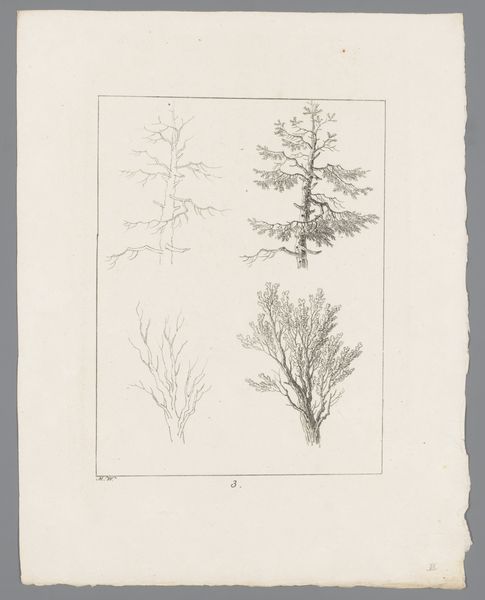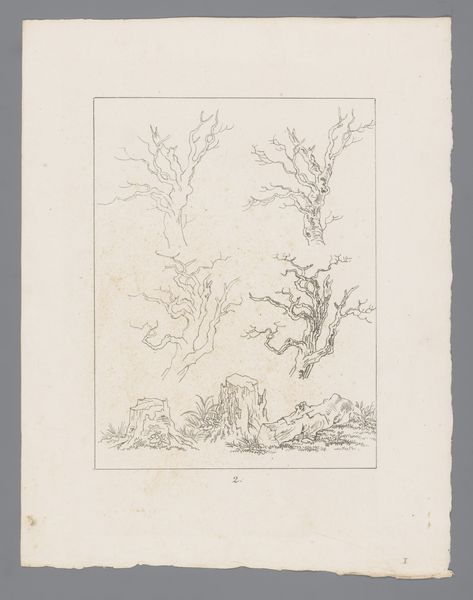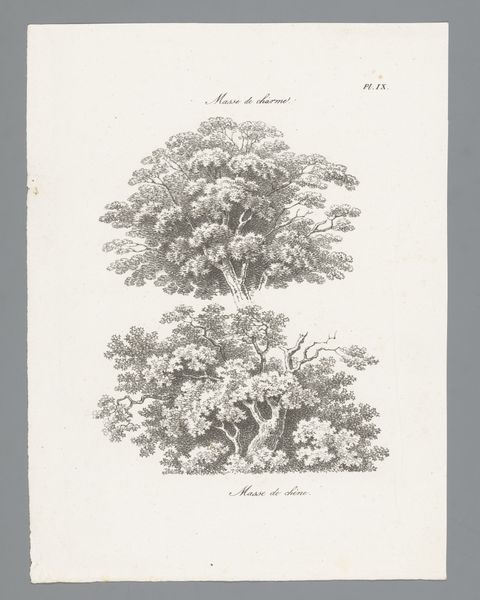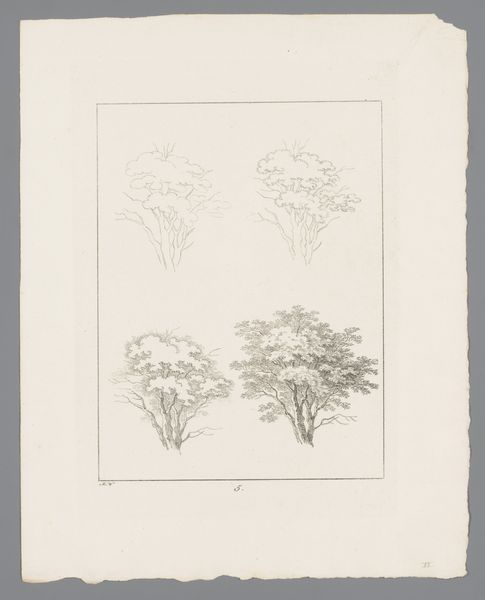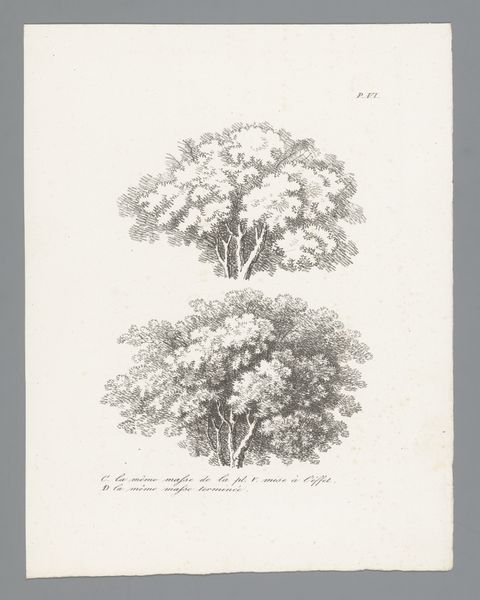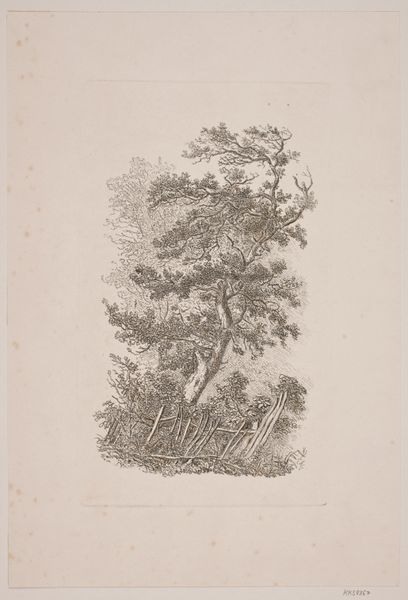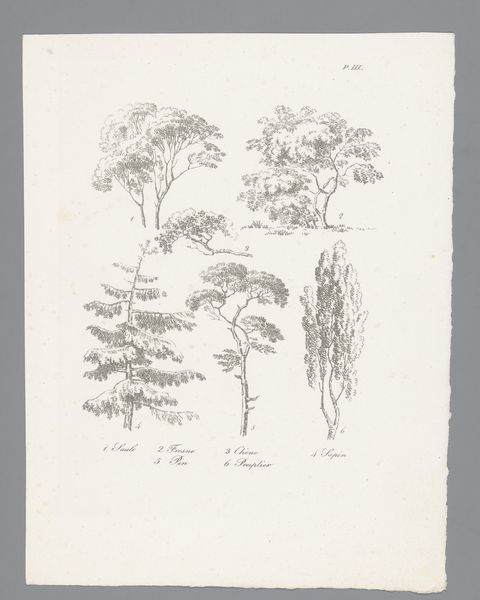
#
light pencil work
#
pencil sketch
#
incomplete sketchy
#
hand drawn type
#
personal journal design
#
personal sketchbook
#
ink drawing experimentation
#
sketchbook drawing
#
watercolour illustration
#
sketchbook art
Dimensions: height 302 mm, width 238 mm
Copyright: Rijks Museum: Open Domain
Editor: Here we have J. Bernard's "Five Studies of Branches that have Lost their Leaves", dating from around 1820 to 1833. It’s a delicate pencil drawing, quite simple, almost scientific in its presentation. What can you tell us about this piece? Curator: I see a drawing deeply rooted in its material conditions. Consider the labor involved: the artist carefully observing, selecting, and rendering these branches with a readily available tool, the pencil. This act is a deliberate engagement with the natural world, mediated by the accessible materials at hand. Notice also how this practice collapses a distinction between "high art" and craft, becoming about observing nature, drawing from life. It feels as though a particular labour that's on display, of patient study, drawing to an understanding. Editor: That's interesting! It makes me consider that he could have instead been a Botanist or something. How the image becomes less of an image of nature but rather the process of creating a kind of study of it... the study is the work. What would these sketches be studies for, do you think? Curator: Precisely! Consider the social context: perhaps a rising interest in naturalism among emerging bourgeois class, maybe something like providing accurate records, using readily accessible tools like the sketchbook to explore an ever evolving environment. Maybe he was creating plans for a larger painting in mind, a painting never meant to see its future! So it makes you reflect - the making, the means, is always an important first step that cannot always be replaced with digital, because you have the trace of time, or process etched on its surface. Editor: So, looking closely at how things were made, the labor and material behind it can tell us a great deal about both the image and its time. I will consider the ‘why’s of production as opposed to only looking at the outcome. Curator: Exactly. Considering art as more than just aesthetics can give it a new kind of meaning altogether.
Comments
No comments
Be the first to comment and join the conversation on the ultimate creative platform.
